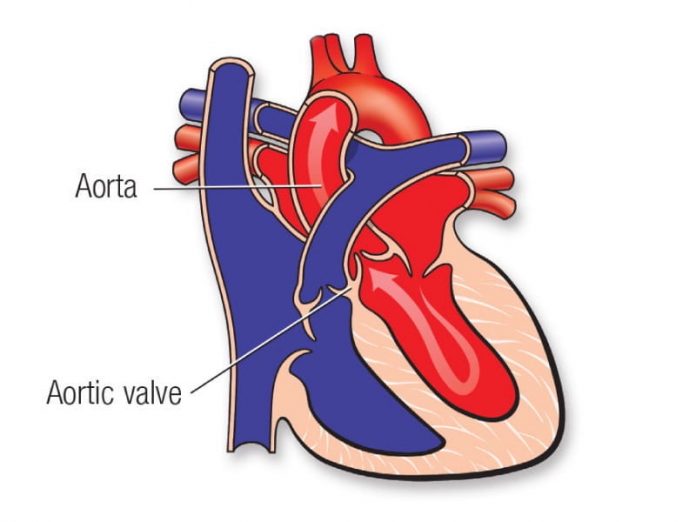
In a new study from the University of Toledo, researchers found the death rate for people who have a tear in a major artery coming out of the heart – aortic dissection – has been rising over the past decade.
And while death rates for women increased faster, older men continued to face an overall greater risk of dying from this uncommon but often fatal tear in the main artery carrying blood from the heart to the rest of the body.
Aortic dissection, also known as AoD, occurs when blood pumping through the aorta splits the layers of the artery wall, trapping blood coming from the heart.
The pressure from the pooled, leaking blood can cause a rupture and decreased blood flow to other organs.
Surgery can repair the damaged artery section or medication can lower blood pressure and reduce the risk of rupture.
In the study, the team analyzed overall AoD death rates in the U.S. from 1999 to 2019 , using data from the Centers for Disease Control and Prevention and a national death certificate database.
Researchers found rates initially fell 1.5% each year from 1999 to 2012, before reversing course and climbing an average 2.5% per year from 2012 to 2019.
The results point to the need for improvements in prevention, especially among groups disproportionately affected.
Black adults experienced a higher annual increase of AoD deaths, 4% per year from 2012 to 2019, as well as the highest rates throughout the study period – from 28.7 deaths per million in 1999 to 35.7 per million in 2019.
The initial decrease in overall AoD death rates and the subsequent reversal mirrors trends in high blood pressure rates, which fell by 2013-2014 and then climbed by 2017-2018, according to the CDC.
The team says black adults – who have substantially higher rates of hypertension, a major risk factor for AoD – did not experience the same decline, which could explain the disproportionate effect in AoD death rates for this group.
Both women and men saw an initial decline in death rates followed by an increase from 2012 to 2019, but that annual increase was higher among women (3.1% per year) than men (2.6% per year).
AoD is hard to diagnose and may often be missed in women, who are more likely to have atypical symptoms than men.
For example, women may experience shortness of breath, rather than chest pain, which is more typical.
Symptoms also can include a sudden stabbing pain in the neck, jaw, abdomen, chest or shoulder, fainting, difficulty breathing or sudden weakness.
If you care about heart health, please read studies about how to control your cholesterol to prevent heart attacks and strokes, and misdiagnosed with acid reflux and anxiety, her heart’s arteries were blocked.
For more information about heart health, please see recent studies about dietary supplements that could prevent heart disease, stroke, and results showing this inexpensive drug combo can protect your heart health, prevent stroke.
The study is published in the Journal of the American Heart Association and was conducted by Dr. Salik Nazir et al.
Copyright © 2022 Knowridge Science Report. All rights reserved.



